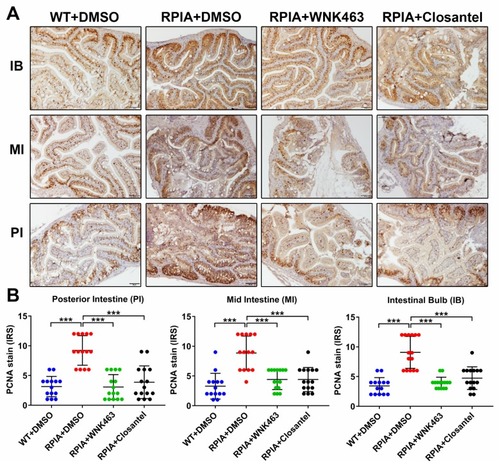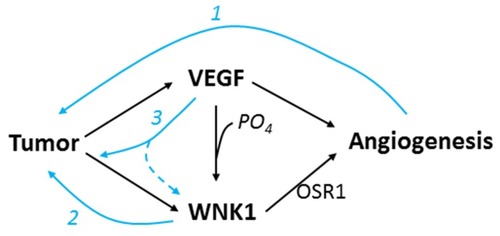- Title
-
WNK1 Kinase Stimulates Angiogenesis to Promote Tumor Growth and Metastasis
- Authors
- Sie, Z.L., Li, R.Y., Sampurna, B.P., Hsu, P.J., Liu, S.C., Wang, H.D., Huang, C.L., Yuh, C.H.
- Source
- Full text @ Cancers
|
Establishment of stable RFP-expressing cancer cell line for tumor xenotransplantation study. ( |
|
Effect of wnk1 knockdown on tumor-induced angiogenesis and tumor cell proliferation in zebrafish embryos. ( |
|
Effect of VEGF receptor inhibitor (PTK787), WNK inhibitor (WNK463) and OSR1/SPAK inhibitor (Closantel) on proliferation of xenotransplanted hepatoma cells. ( |
|
Effect of WNK1 pathway inhibitors on transgene-activated colorectal cancer (CRC) in zebrafish. ( |
|
Effect of WNK1 pathway inhibitors on proliferating cell nuclear antigen (PCNA) expression in colorectal cancer. ( |
|
Xenotransplanted tumors produce WNK1 and induce endogenous WNK1 in zebrafish. ( |
|
Endothelial cell-specific wnk1a expression promote tumorigenesis in HCC-transgenic fish. ( |
|
Effect of WNK1 pathway inhibitors on HCC in transgenic fish overexpressing endothelial cell-specific wnk1a. ( |
|
Model for WNK1 and VEGF interaction in angiogenesis and tumor growth. Tumor produces VEGF and WNK1, and both act to stimulate endothelial cells to form new blood vessels. WNK1 stimulates angiogenesis through downstream kinase OSR1. VEGF-stimulated angiogenesis is at least partly through PI3K/AKT-induced phosphorylation of WNK1. Three positive feedback loops participate in amplification of tumor growth: (1) angiogenesis providing nutrient for tumor to grow, (2) direct proliferative effect of WNK1 on tumor cells, and (3) expression of WNK1 from tumor or other tissues (dotted line) stimulated by VEGF. |









